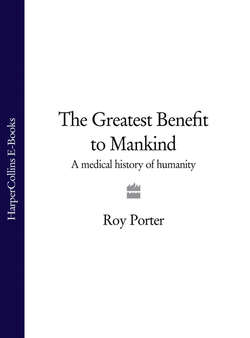Читать книгу The Greatest Benefit to Mankind: A Medical History of Humanity - Roy Porter - Страница 33
HEALTH CARE
ОглавлениеWhat of health care in general in Islam? Damascus and Cairo were no dirtier or cleaner than Naples, Paris, or any other pre-modern cities. Livestock was kept at home, waste left in the streets, and epidemics wrought havoc. Medieval sources frequently refer to ‘pestilence’, sometimes smallpox, though the greatest scourge was bubonic plague, which devastated the region in wave after wave between 541 and 749, returning as the Black Death in 1347–9. Cairo, the world’s second largest city with half a million people, lost half its population.
To serve the sick, a range of medical practitioners and services was on offer. The formative period was marked by the predominance of Christian doctors, with lesser numbers of Jews and pagans. Many physicians had several occupations, and sidelines in trade were common. Healing remained more flexible and unregulated than in Christendom: there were no licensing requirements, no fixed curricula or sites for learning medicine, and no laws defining the profession. Islamic society tolerated a spectrum of practitioners and remedies, partly because popular lore was upheld by custom and the approval of the Prophet. In any case, learned medicine was often unavailable in the countryside, and within the cities it was beyond most people’s pockets.
There were various ways to prepare for a medical career. Some doctors were self-taught, like Ibn Sina. Others underwent formal study under a teacher. Muslims sometimes taught in mosques, and hospitals were natural places for instruction, since patients were to hand and many hospitals had libraries. Teaching methods and curricula varied according to the master, though instruction often focused on the key Galenic works. Mathematics and logic were also studied, and the novice had an array of manuals, later supplemented by the cribs generated around Ibn Sina’s Qanun. Textual mastery was paramount; texts were usually read aloud and learnt by heart, and classwork meant sitting with a mentor who posed questions and glossed obscurities. Anatomy was not taught in a hands-on manner, since dissection was abhorrent to Muslim sensibilities: the dead were believed to feel pain, and dissection was desecration. Clinical experience was obtained in hospitals: physicians used patients to illustrate maladies and problems to students who trailed them on their rounds. Pupils probably shouldered certain basic duties, such as venesection.
Physicians had certain public duties to fulfil, some quite bureaucratic. Doctors were frequently called upon to make official statements – for example, when a leper was seeking public assistance. Jewish physicians were often leaders of their communities, and Muslims found themselves in administrative positions such as army physician or hospital medical superintendent.
The hospital, though not part of a wider ‘health policy’, was a centre of Islamic medical practice. These institutions (the greatest were in Baghdad, Damascus, Cairo and Cordova) were initially inspired by the precedent of sick-relief services offered at Christian monasteries, although the Islamic hospital became a more elaborate medical institution. The first was apparently founded in Baghdad around 805 on the initiative of Harun al-Rashid, and this was followed by others. The movement spread to Persia, and by the twelfth century a hospital graced every large Islamic town; thirty-four have been identified in Muslim cities from Spain to Moghul India. One of the best known was built in Cairo in 1283 by al-Mansur Qalawun, who dedicated it to all who needed care – rich and poor, old and young, male and female, of all faiths. It had special wards for physical and mental diseases, a surgery, pharmacy, dispensary, library and lecture rooms, and a chapel for Christians as well as a mosque; it was still in use when Napoleon invaded Egypt.
Separate hospitals for the insane were also set up. The Qur’an required humane care of the mad, and the first institutions created primarily for mental cases appeared in Muslim lands. Called maristans, these had a good reputation, and European travellers marvelled at the humanity shown to the insane. The Islamic tradition had some impact, the first European mental hospitals being built in former Muslim Spain, beginning with Granada in 1365.
Nevertheless, the role of hospitals in medieval Islam should not be exaggerated. They were a drop in the ocean for the vast size of the populations they had to serve, and their true function lay in highlighting ideals of compassion and bringing together the activities of the medical profession.
With Cordoba falling to the Christians in 1236 and Baghdad sacked by the Mongols in 1258, Arab civilization was beginning to decline after 1300. The Ottoman Turks who dominated the Levant in the succeeding centuries did not inspire new intellectual glories. Nevertheless, the medical system described flourished in the Muslim world until the nineteenth century, when it gradually receded before the tide of modern western medicine. It continues in India and Pakistan as Yunani medicine.
